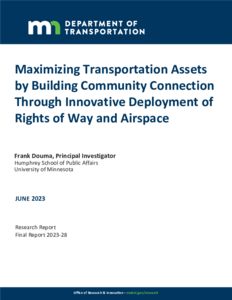Enhancing Managed Lanes Equity Analysis
Creator
Date Created
2023-03
Report Number
2023-15
Description
Improving Carsharing and Transit Service with ITS
Date Created
2008
Report Number
2008-43
Description
The ABC Parking Ramps in Minneapolis: A Unique Past; A Visionary Future
Creator
Date Created
2019
Report Number
2019-13
Description
Telework, Telecommunications and Community Design
Creator
Date Created
2001
Report Number
2005-17A
Description










